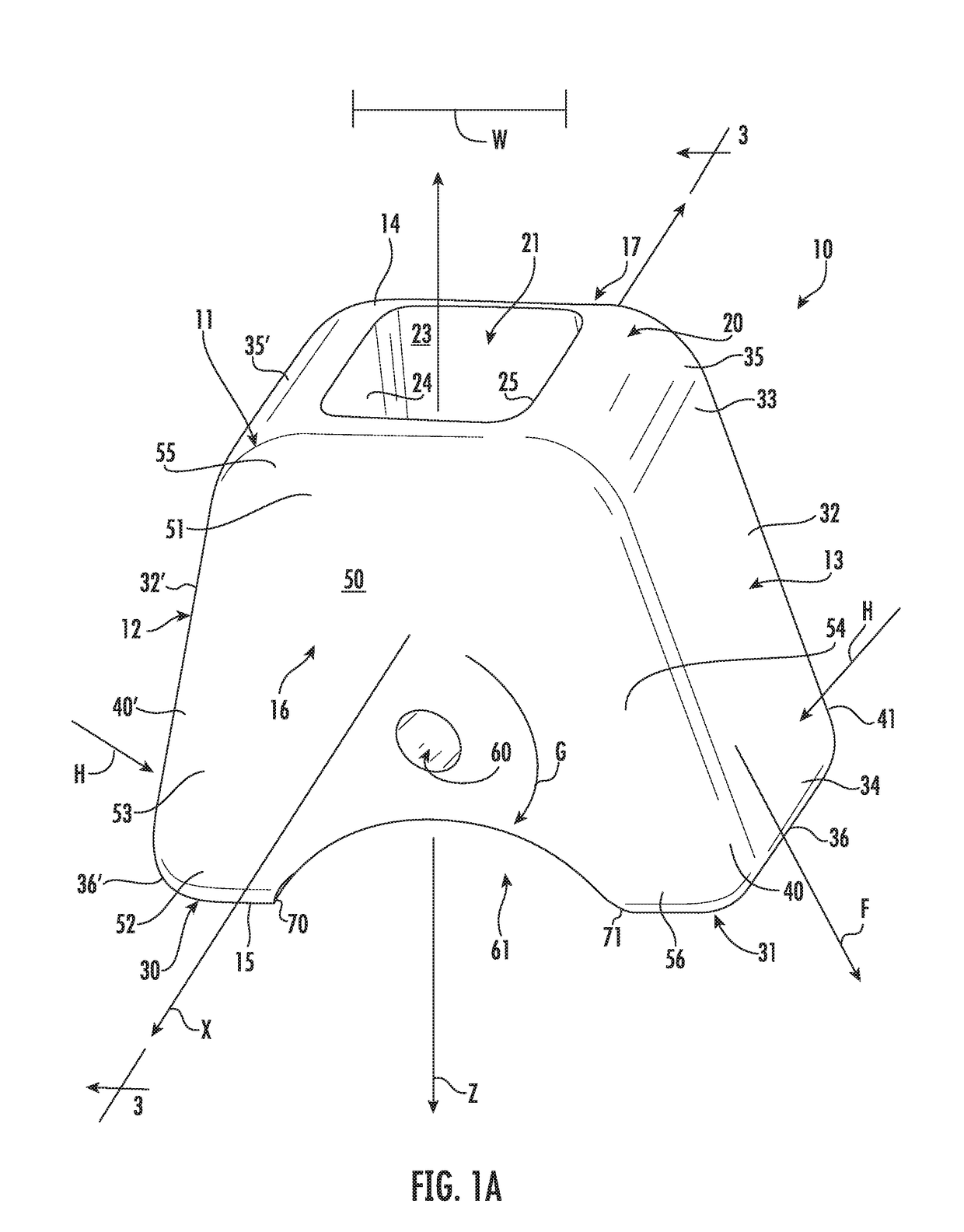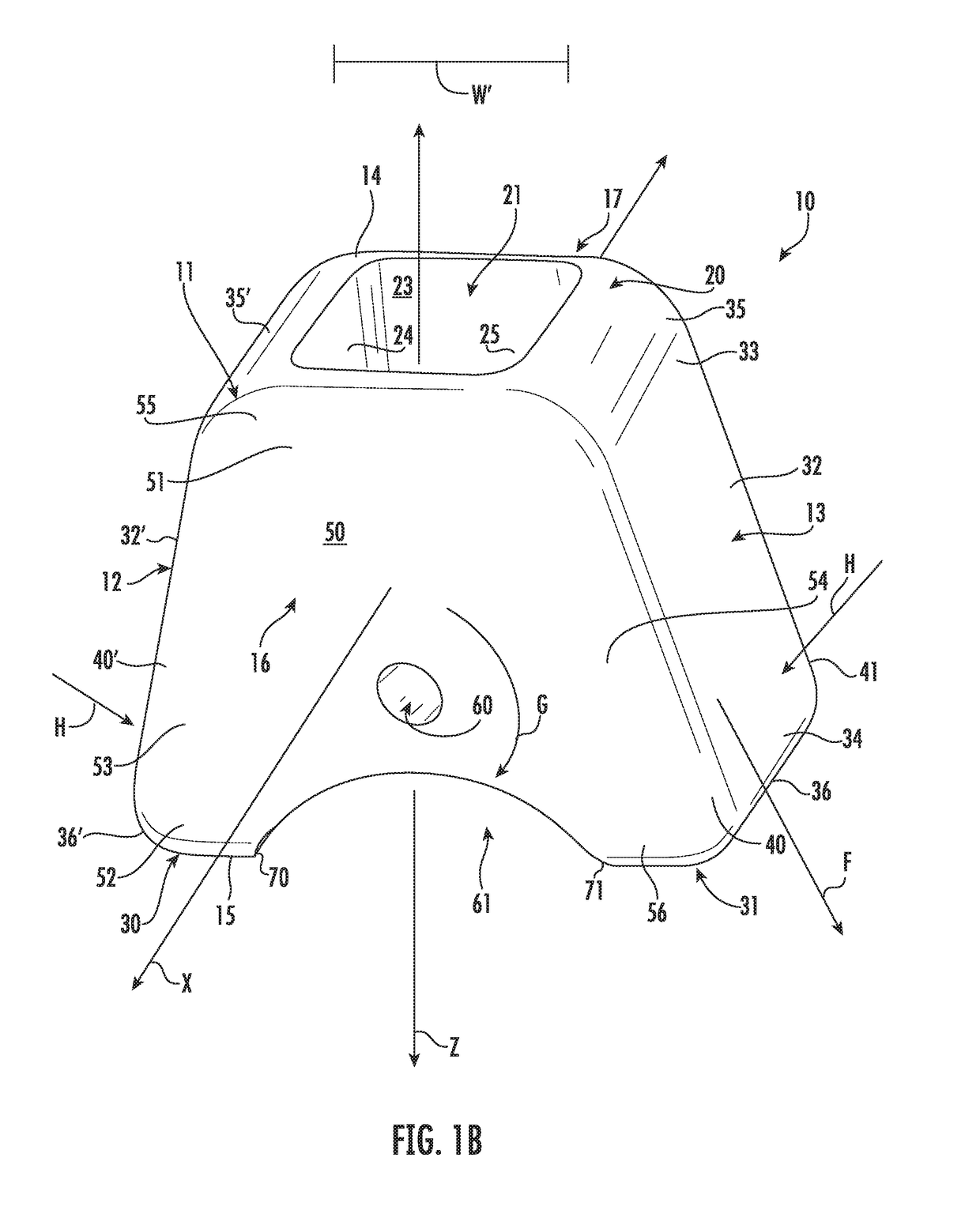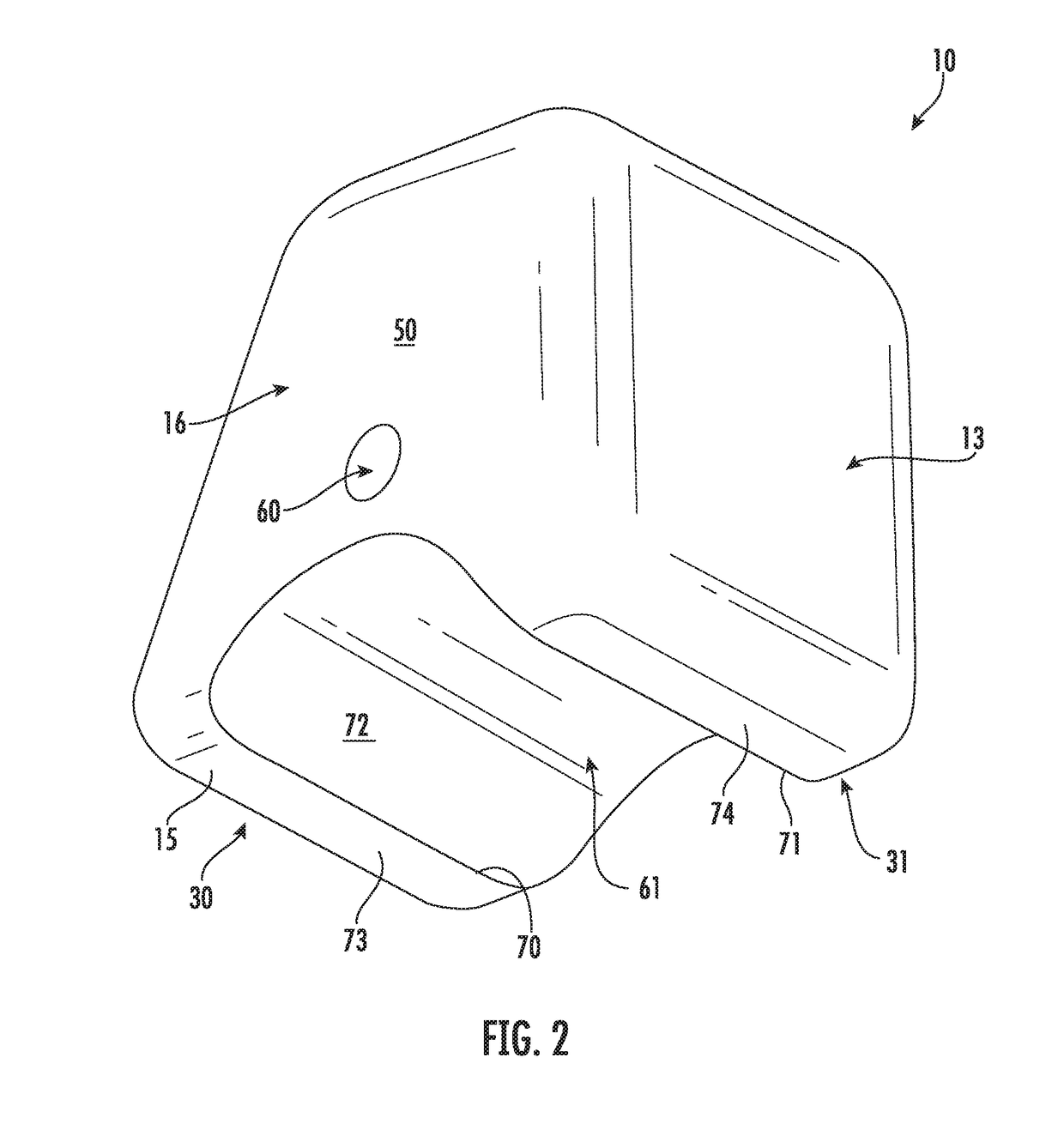Protective Perineal Pad
a perineal pad and protective technology, applied in the field of medical devices, can solve the problems of disproportionate force placed on the leg and lower body, all invasive surgeries carry risks, and are routinely associated with risk and post-operative damage,
- Summary
- Abstract
- Description
- Claims
- Application Information
AI Technical Summary
Benefits of technology
Problems solved by technology
Method used
Image
Examples
Embodiment Construction
[0017]Reference now is made to the drawings, in which the same reference characters are used throughout the different figures to designate the same elements. FIGS. 1A, 1B, and 2 illustrate a perineal pad 10 (hereinafter, the “pad 10”) in top and bottom perspective views. The pad 10 is useful for placement between a patient's legs during any procedure involving the lower extremities such as, for example, hip replacement surgery. The pad 10 is useful in procedures which require traction and those which do not, and it is also useful in procedures on fracture beds with posts and in procedures without posts. In short, the pad 10 is useful to hold the patient's legs in position without force being applied to the perineal area. Indeed, the pad 10 is useful to hold the patient's legs in position even without significant contact with the patient's perineal area. In this way, the pad 10 minimizes the impact of traction force on the perineal area, pelvis, pelvic area, inner thighs, and general...
PUM
 Login to View More
Login to View More Abstract
Description
Claims
Application Information
 Login to View More
Login to View More - R&D
- Intellectual Property
- Life Sciences
- Materials
- Tech Scout
- Unparalleled Data Quality
- Higher Quality Content
- 60% Fewer Hallucinations
Browse by: Latest US Patents, China's latest patents, Technical Efficacy Thesaurus, Application Domain, Technology Topic, Popular Technical Reports.
© 2025 PatSnap. All rights reserved.Legal|Privacy policy|Modern Slavery Act Transparency Statement|Sitemap|About US| Contact US: help@patsnap.com



